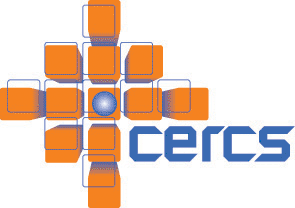

|
A Solicitation for Autonomic Computing Research Proposals from IBM As part of its annual effort to identify and support faculty around the world who are doing work in areas of interest , IBM is soliciting autonomic computing research proposals. Authors of successful proposals may receive faculty awards of up to $40,000 US; this amount is not subject to overhead. Of special interest are proposals that address one or more of the following areas: 1. Business to IT Bridge Research proposals in this area address the gap between business-level concerns and activities, such as defining and monitoring business processes and metrics, and IT-level concerns, such as deploying large-scale applications and controlling and/or monitoring their behavior. 2. Radical Simplification of Management Along with autonomic computing and process automation, new paradigms such as virtualization and Service-Oriented Architectures promise to greatly simplify management. Research proposals in this area will develop and explore these new paradigms, and other more radical ones that may not yet have been invented. There is also strong interest in projects that use these techniques to structure systems so that certain IT activities (e.g. installation, configuration management) are safe enough to automate, thereby eliminating the need to invoke expensive, time-consuming, manual processes. 3. Management to Multiple Objectives A hallmark of autonomic computing systems is that they manage themselves in accordance with high-level objectives from humans. These objectives may describe desired levels of performance, availability, security, power usage, and other aspects of management. Research proposals in this area will explore methods for eliciting multiple high-level objectives, methods for managing to them, and applications of such methods that attain a desirable tradeoff among these concerns in real products and systems. Inasmuch as the high-level objectives may be defined at the business level, there is some overlap with the Business to IT Bridge area. 4. Management by Design Research proposals in this area are concerned with capturing at design time much of the knowledge that is required to manage data centers and other large-scale computing systems effectively. It encompasses design-time tooling that makes it easy for developers and others to add information (e.g. on inter-component dependencies) that is useful in deployment, and in managing security, performance, and health at run time. Furthermore, it includes tools that allow developers to more easily incorporate componentized management elements and best practices into their software. 5. Self-Describing Software There is an increasing need for software components to describe themselves, and for mechanisms that exploit such descriptions to achieve flexible automated installation and configuration. One notable standards effort along these lines is the OASIS Solution Deployment Descriptor (SDD) Technical Committee ( http://www.oasis-open.org/committees/tc_home.php?wg_abbrev=sdd), which is standardizing ways to express software installation characteristics required for lifecycle management in a multi-platform environment. IBM, a member of OASIS SDD TC, is interested in increased SDD adoption. In particular, IBM is interested in exploring synergies between SDD and the very popular RPM installer for the Linux platform. Among the main priorities are: Investigate utilization of SDD specification for nested, hierarchical, self-configuring Linux based systems Investigate install and configuration problems for open source software solutions targeted for Linux platforms. Explore implementation of SDD dependency checker feature into RPM distribution to mitigate configuration problems. Create small footprint C/C++ implementation of SDD specification in order to create an installer and/or dependency checker that targets Linux systems, or embedded devices running UNIX based OS. If you are interested in submitting a proposal, and can identify an IBM Research or Development employee who is willing to serve as technical contact for it, please work with that technical contact to initiate your proposal. This entails writing a concise description of your proposal; 2-3 pages are usually sufficient. If you cannot identify a good technical contact, or if your technical contact is unfamiliar with the Faculty Awards process, you may send e-mail to Patricia Rago (ragopat@us.ibm.com) or Jeff Kephart (kephart@us.ibm.com) for information on potential technical contacts or the submissions process. In either case, please send a copy of your finished proposal to Pat and Jeff so that they can coordinate the evaluation process. Among the criteria being considered are the relevance of the proposal to one or more of the areas listed above, the extent to which it either complements or supplements IBM's R&D program, its overall quality and clarity, and the track record of the professor in fields pertaining to self-managing systems--especially any involvement they may have had in autonomic computing conferences and workshops. You are welcome to forward a copy of this e-mail to colleagues who are doing work in areas related to autonomic computing. Important Dates: 3/10 - Deadline for technical contact to invite specific faculty to submit a proposal 3/17 - Deadline for receipt of proposals from faculty members |